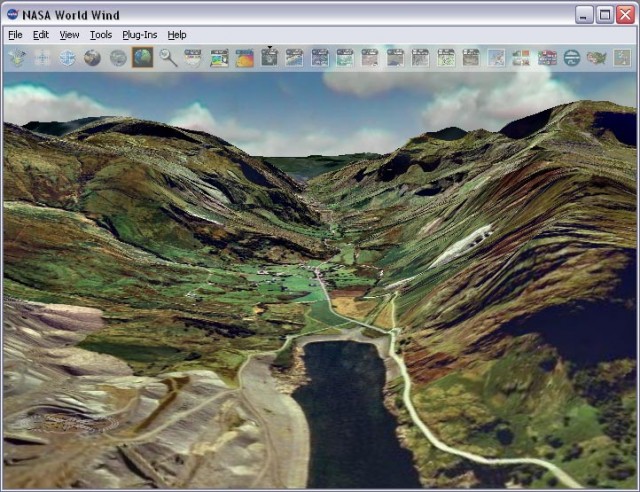virtual geography
THE INTERNET TOGETHER with a new generation of related computer software and hardware is producing a revolution in how we conceptualize and interact with geographic places and spaces. This revolution is sustained by the continual diffusion of information and communication technologies (ICT) into many segments of a globally connected society. These ICT forms include immersive multimedia, video conferencing, computer-aided design (CAD), electronic surveillance, consumer profiling, and virtual realities. Virtual geography refers to the creation of artificial geographies for communication and interaction purposes using concepts from the field of virtual reality (VR).
Virtual reality is the general name given to a wide range of computer-based approaches for visualizing objects and spaces in three or more physical dimensions (distances, height, and time). Some regard VR as a technology for interacting with multidimensional databases, while others view it as a way of integrating humans and information. Nevertheless, VR is distinguished from computer-aided design and GEOGRAPHIC INFORMATION SYSTEMS (GIS) in that the end user experience is an interactive and immersive one. The end user is able to move around the digital space created within the VR world and may interact with the objects found. Recent software systems integration seems to suggest that VR capabilities are now gradually being incorporated into GIS software packages to support visualization and information communication.

The virtual reality experience can be delivered in many ways. The world may be projected within “caves or sheds” consisting of display screens that surround the field of view of the user and within which the user can move. Specially designed stereoscopic glasses, head mounted display (HMD) units with screens positioned directly in front of the eyes, and gloves may also be used to experience the virtual world and to touch virtual objects. The downside of these forms of delivery is cost. Hence, they are more commonly used in research and high-end simulation environments. The most widely used forms of VR delivery systems is the desktop computer where the virtual worlds are displayed on the computer monitor and navigation is achieved with the mouse and keyboard. Moreover, the desktop virtual worlds can be transported and distributed using CD-ROMS or the internet with minimal skills needed to implement or use them. The only requirement is usually a viewer or plug-in program that in many cases is freely available.
The amount of interaction and immersion that is permitted in the VR world is dependent on the design and the hardware devices used in the interaction. In a fully immersive environment, a number of computer devices transform the user actions into activity in the VR world. Depending on the devices available, the interactions can simulate sensations such as cold, heat, or resistance. In a partially immersive environment, the user remains aware of the real world during the interactions. Desktop virtual worlds are an example of partially immersive environments. In augmented reality systems, the user is in an environment where elements of the real world and virtual world complement each other through graphical information. The VR world serves as an interface and host to the user during interactions with the artificial world of the computer graphics. The user may take on many forms, such as a whole body (an avatar), part of a body, or a controllable viewpoint. The design may include the possibility for users to control and use objects in the virtual environment.
Virtual reality systems are being used in many contexts such as in training, education, simulation, visualization, navigation, gaming and game design, and entertainment. Application areas of VR in geography include virtual cities, landscape visualization, virtual field courses, and visualizing abstract concepts and models of reality. Although the technology has demonstrated its utility in these environments, issues such as end-user requirements, navigation conventions, degree of realism, extent of interaction, and user expectations remain. Of importance, too, are the philosophical debates and implications of the dichotomy and boundary (if any) that exist between the real and the virtual.